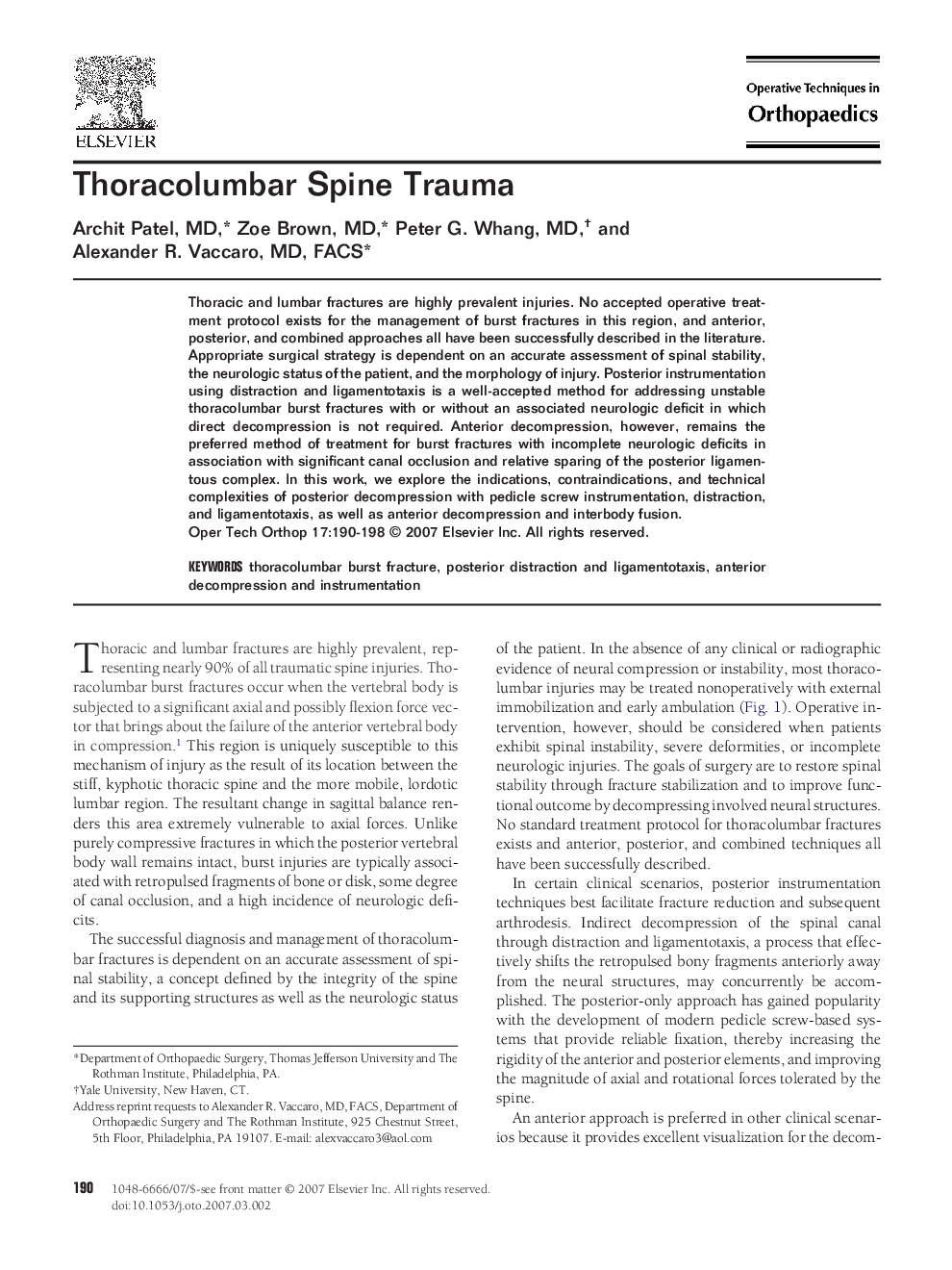| Article ID | Journal | Published Year | Pages | File Type |
|---|---|---|---|---|
| 4079370 | Operative Techniques in Orthopaedics | 2007 | 9 Pages |
Thoracic and lumbar fractures are highly prevalent injuries. No accepted operative treatment protocol exists for the management of burst fractures in this region, and anterior, posterior, and combined approaches all have been successfully described in the literature. Appropriate surgical strategy is dependent on an accurate assessment of spinal stability, the neurologic status of the patient, and the morphology of injury. Posterior instrumentation using distraction and ligamentotaxis is a well-accepted method for addressing unstable thoracolumbar burst fractures with or without an associated neurologic deficit in which direct decompression is not required. Anterior decompression, however, remains the preferred method of treatment for burst fractures with incomplete neurologic deficits in association with significant canal occlusion and relative sparing of the posterior ligamentous complex. In this work, we explore the indications, contraindications, and technical complexities of posterior decompression with pedicle screw instrumentation, distraction, and ligamentotaxis, as well as anterior decompression and interbody fusion.
